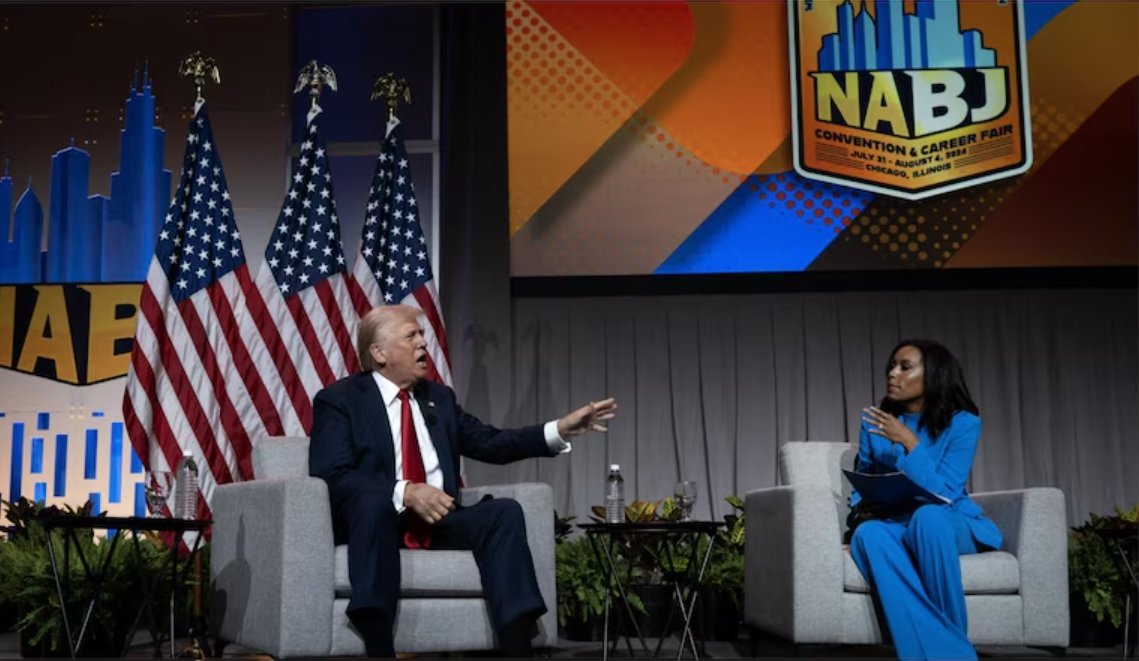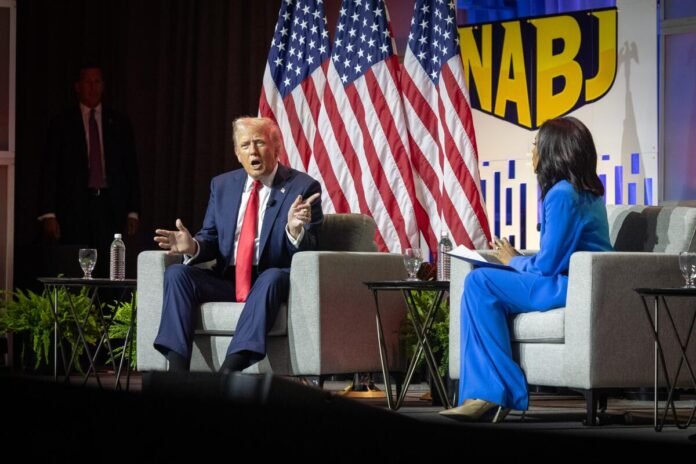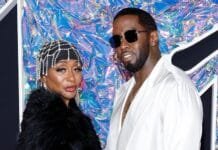The National Association of Black Journalists (NABJ) convention in Chicago recently became the stage for a contentious and controversial appearance by former President Donald Trump. His remarks not only questioned Vice President Kamala Harris’s racial identity but also drew criticism for his statements on Black communities and immigrants. This blog post delves into the key moments of the event, the reactions from attendees and media professionals, and the broader implications of Trump’s comments.
The Event Unfolds: Trump’s Remarks on Kamala Harris
During his appearance at the NABJ convention, Trump made headlines with his comments questioning Kamala Harris’s racial identity. “She was always of Indian heritage, and she was only promoting Indian heritage,” Trump said. He added, “I didn’t know she was Black until a number of years ago, when she happened to turn Black, and now she wants to be known as Black. So I don’t know, is she Indian or is she Black?”
These statements were not only factually incorrect but also sparked outrage due to their racially insensitive nature. Harris, who is of both Jamaican and Indian heritage, has consistently embraced her multifaceted identity.

Confrontations with Journalists
The tension at the convention escalated further when Trump responded to questions from ABC News’ Rachel Scott about his policies toward Black communities. Berating Scott, Trump claimed, “I don’t think I’ve ever been asked a question in such a horrible way,” and labeled himself “the best president for the Black population since Abraham Lincoln.”
This interaction, marked by boos from the audience, showcased Trump’s combative stance toward media professionals. He accused the journalists of being “rude” and criticized the event’s organization, claiming he was invited under false pretenses.
Immigrants and the Black Community
Another contentious topic during Trump’s appearance was his rhetoric on immigration. He suggested that immigrants were a threat to job security for Black Americans, stating, “People in this room and people outside this room are going to be losing their jobs to people who came into this country illegally.”
This divisive language aimed to pit Black communities against immigrants, a strategy that has been criticized for fostering division rather than unity.
Damage Control and Campaign Strategy
Trump also addressed concerns about his vice-presidential pick, J.D. Vance, and downplayed the importance of a running mate after Vance’s controversial remarks about women who do not have children. Despite the backlash, Trump outlined his campaign promises, including closing the border and reducing energy prices and interest rates.
“I want people to come into our country, but they have to be vetted, and they have to be checked,” he told the audience, attempting to balance his hardline stance on immigration with a message of controlled inclusion.
Backlash from the NABJ Community
Trump’s appearance at the NABJ convention was met with significant backlash from the Black journalism community. Karen Attiah, co-chair of the convention and a columnist for The Washington Post, resigned in protest. In her resignation post, she wished the journalists interviewing Trump “the best of luck” and criticized the decision to platform him.
Other prominent members also expressed their disapproval. April Ryan, White House correspondent for The Grio, called the invitation “a slap in the face” to Black women journalists who had faced Trump’s attacks. Ryan highlighted the challenges Black journalists have faced and criticized Trump’s history of racist comments.
Organizational Defense and Historical Context
Despite the criticism, NABJ president Ken Lemon defended the decision to invite Trump, citing the organization’s history of inviting presidential candidates from both parties. Lemon emphasized that the invitation was not an endorsement and aimed to provide a platform for journalists to ask tough questions.
“I consulted with a group of our founders and past NABJ presidents Tuesday on-site in Chicago, and as a group, we affirmed that the invitation to former President Trump was in line with NABJ’s usual practices since 1976,” Lemon wrote. The tradition of inviting presidential candidates dates back to the organization’s founding and includes appearances by Presidents George W. Bush, Barack Obama, and Bill Clinton.
The Broader Implications
Trump’s appearance at the NABJ convention highlights the ongoing tensions between the former president and the media, particularly Black journalists. His comments on Kamala Harris and immigration reflect broader issues of race and identity in American politics. The event also underscores the challenges media organizations face in balancing the need for journalistic access with the potential for platforming harmful rhetoric.
Conclusion
The NABJ convention served as a microcosm of the broader political and social debates currently shaping the United States. Trump’s remarks and the reactions they elicited reveal the deep divisions and ongoing struggles for racial justice and representation. As the 2024 election approaches, these issues will undoubtedly remain at the forefront of national discourse, with significant implications for both the media and the broader public.





